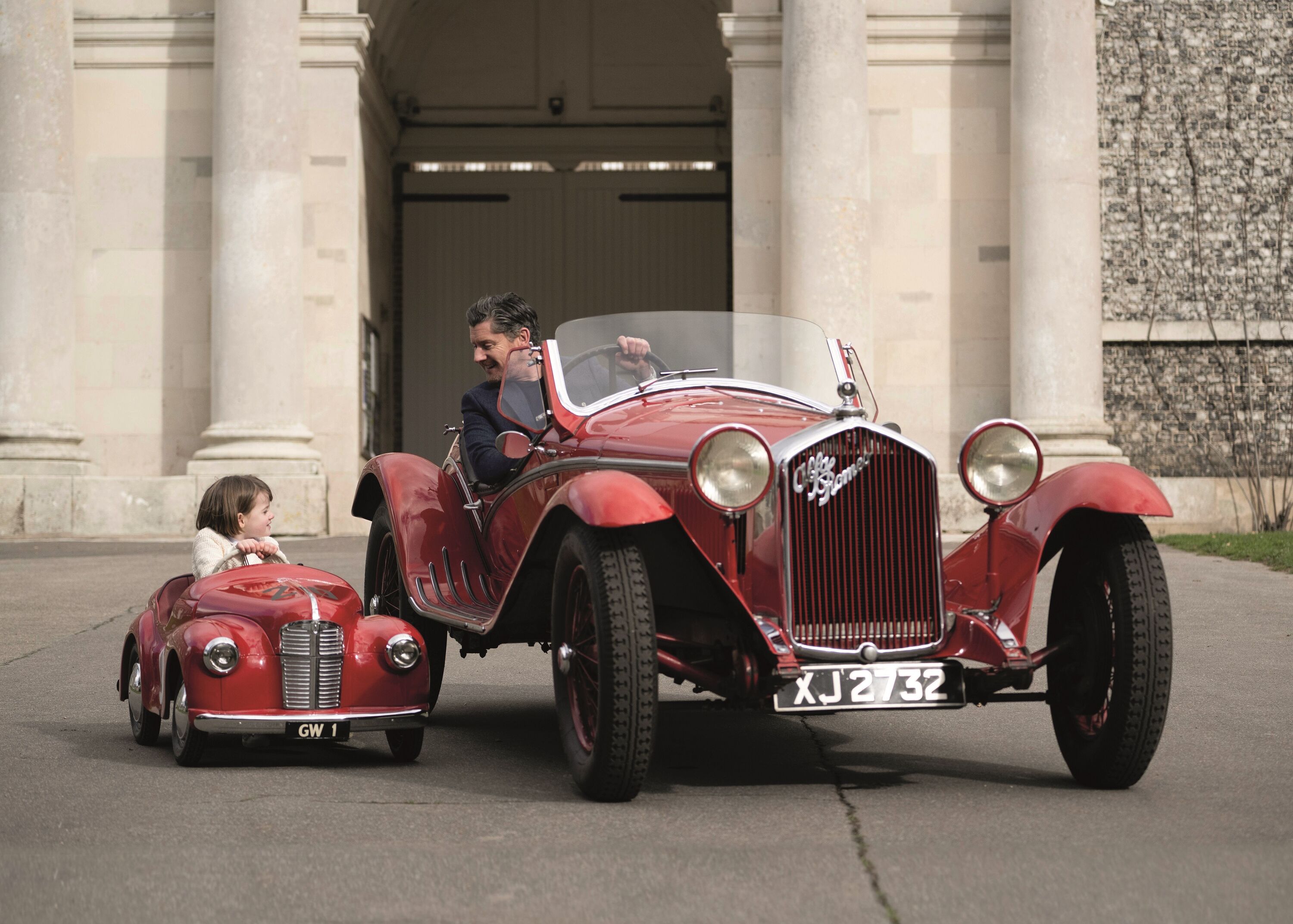Honda’s ‘Famous Five’, the MotoGP five-cylinder legend
Honda was not the public face behind the pressure to abandon two-stroke grand prix racing at the start of the new century. That role was left to Yamaha, who ironically in 1975 made the first two-stroke to conquer the premier class. But the whole Japanese industry was behind the move, and it would certainly have pleased and indeed vindicated Soichiro Honda, a dedicated proponent of four-stroke engines.

Racing’s about face was only following general practice. Despite many advantages, two-stroke development had failed to keep pace with increasing exhaust-emission regulations, particularly in the USA. Production two-strokes were all but extinct except for small-capacity bikes; while sports motorcycles had followed Honda’s lead, set by their race-based CB750 in-line four in 1969. By now, variations on the theme include V4s and in-line triples, and engine capacities had grown to 1,000cc and beyond.
So the die was cast. The last year of the 500cc class was 2001. From 2002, MotoGP would go four-stroke.
The first regulations were clear, and intended to prevent any loss of speed or prestige. The bikes had to be genuine full-race prototypes, not sourced in any way from production bikes. No overlap. To underline this, and to separate MotoGP from World Superbikes, a maximum capacity of 990cc (rather than 1,000) was decreed. There were also different minimum weight limits for different numbers of cylinders. Aprilia went the lightweight route with a three-cylinder engine. Honda took advantage of this in another way, and it was time again for something different: a V5.
There were several advantages. One was because a five-cylinder was allowed the same minimum weight as a four; while lighter pistons would give access to higher revs, in line with Honda’s long-standing racing philosophy. They would soon be moving on towards 20,000 rpm.
The configuration – with three cylinders forward and two to the rear – made the bike usefully narrower between the rider’s knees, while the extra crankshaft width compared with a four was negligible.
Finally, a 75.5-degree vee angle allowed perfect primary balance. This was effectively a V4 with an extra piston balancing the rest. There was no need for a power-sapping balance shaft.
The new rules introduced technology alien to the simpler two-strokes: slipper clutches to control engine braking (“reverse torque” in Honda-speak); as well as electronic fuel injection. This was just part of an ever-growing panoply of electronic controls over the coming years, including fly-by-wire throttles, with “stepper” motors to increase idle speed during downshift, again to reduce reverse torque. Honda also pioneered varying rates of response for different gears, with a gentler throttle response in the lower ratios.
There was something else besides, for the all-new RC211V. The exhaust note was both unique and mellifluous, adding an intriguing rasp to the questing boom of a V4. Just as in the old days of the 125 five and the 250 six, Hondas took the leading role in the world championship soundtrack.
The new V5 was seen for the first time during 2001, when Honda’s latest champion Valentino Rossi and his team-mates tested it, after winning the Suzuka 8 Hours on a V4 production-based four-stroke Honda. Among other things, the first version was very compact. A bit too much so, in fact, for the lanky Rossi, who was underwhelmed. At the end of the season, having won the final two-stroke championship and his own first of seven premier-class crowns, he said so. “Maybe next year I will stay on the two-stroke.”
The next version was bigger, and Valentino tested it back-to-back with the NSR at Jerez, where he was alarmed to note that Japanese rider Daijiro Kato set a quicker lap time on the NSR than his own on the RCV. But building a new four-stroke for their star rider to reject didn’t fit Honda’s script.
Time would show that they were right. For 2002, the first four-stroke year, 500cc two-strokes were allowed to compete with the 990s. They put a good fight – but didn’t win a race. The extra torque of the four-strokes meant they could surge ahead under acceleration, then get in the way in the corners.
Halfway through the year, Rossi was still yearning for the lighter and more personal two-stroke. “Riding this bike is great fun. I like very much. But for me was better the two-stroke. It had more heart. To set the bike was more hard – if it was not at 100 per cent is a disaster. Also it is a big challenge for the mechanics. But in the end, the four-stroke is better than the two-stroke now.” Gradually but surely the V5 won his respect, and then his affection.
More importantly, it won races. Rossi equalled his own total of 11, set on the NSR the previous year; Repsol Honda teammate Tohru Ukawa won another, and satellite-team rider Alex Barros two more, giving the first RCV 14 wins out of 16 races. The rout had begun at Honda’s home circuit of Suzuka, originally commissioned by Soichiro himself.
Rossi took the title the following year as well, with Hondas filling the top three places. Then Yamaha imposed a two-year interregnum, after a major redesign, plus the talent of Rossi, who switched teams for 2004. But in 2006 American Nicky Hayden won it again for the factory Honda team.
That was the V5’s last hurrah. New technical regulations came into force in 2007. The maximum number of cylinders was limited to four – supposedly to cut costs; and engine size reduced to 800cc – supposedly to stop the rapid increase in top speed.
Neither of these aims was achieved, while Honda reverted to their familiar V4 format, and had a difficult four years with the RC212V. The category ran for five years, and – determined to make good – HRC performed major mechanical upgrades. These including pneumatic valve springs and a pioneering seamless-shift gearbox, and in 2011 new rider Casey Stoner won the final 800-class championship.
Stoner’s chances of doing it again in 2012 were spoiled by injury. In the third era of MotoGP, Honda’s baton passed to Dani Pedrosa, who finished a close second to fellow-Spaniard Jorge Lorenzo’s Yamaha.

The second decade of four-stroke racing had seen an important change in regulations. Engine size had been increased to a full 1,000cc. This has remained unchanged since: subsequent rule changes have concentrated on cutting costs and making a fairer contest for non-factory teams, mainly by restricting electronics. A control Magneti Marelli ECU came in 2015, and control software from the same source from 2016.
The result has been much closer racing, with the pressure on factory engineers to make the most of what they are allowed. Honda’s third MotoGP bike, dubbed RC213V, has been the most successful. This is thanks to several design upgrades, including a switch to a 90-degree vee angle, eliminating the previous iteration’s need for a balance shaft; and a reversal of crankshaft rotation, which helps to counteract the gyroscopic forces of the wheels.

There has been another factor which means the RC213V has won five of the last seven rider championships, and six constructor crowns … the genius of Marc Marquez. An aggressive riding style married to the deliberately quixotic RC213V has made him almost unbeatable, missing the title only once since his debut in 2013 until 2018 … and the pair were in control again as the 2019 season approached its summer break.
Just one thing is missing for Marquez. He never had the chance to ride the V5 RCV that started it all.
Photography provided by Motorsport Images.
MotoGP
Motorcycles
Motorsport
Honda
RC211V
RC213V
Valentino Rossi
Marc Marquez
Dani Pedrosa





